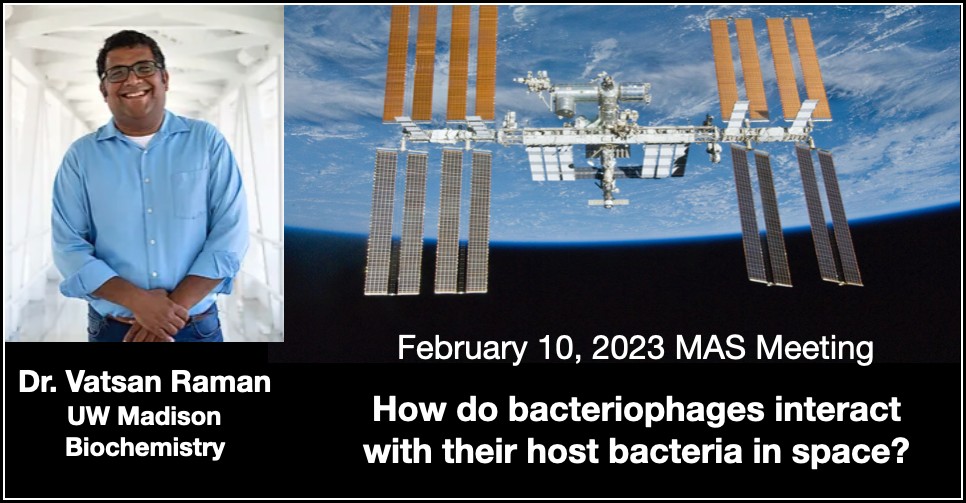How do bacteriophages interact with their host bacteria in space?
A Presentation by Vatsan Raman, UW Biochemistry

Bacteriophages, or ‘phages’, are bacterial viruses that are the most abundant organism on Earth. While phage research has progressed considerably terrestrially, how phages and bacteria interact in microgravity is largely unknown. Microgravity presents enormous challenge for microorganisms, which are greatly affected by gravity to mediate cell-cell and cell-phage interactions. To elucidate these interactions, we explore how T7 bacteriophage interacts with E. coli BL21 in microgravity onboard the International Space Station (ISS). We incubated samples in gravity and microgravity for short- and long-term experiments, finding that lysis is delayed in microgravity conditions and suggesting this phage is inhibited in microgravity. We identified novel mutations in phage proteins that influence activity in microgravity using whole genome sequencing and examine how microgravity influences selection in phage structural proteins. Our study provides a preliminary examination of the influence of microgravity on phage-host interactions. The success of the approach used in this study provides a foundation for future research in microgravity to explore interactions between phages and bacteria that define microbial communities.
Biographical sketch: Vatsan Raman is an Associate Professor in the Department of Biochemistry at the University of Wisconsin Madison. He is an affiliate in the Departments of Bacteriology, and Chemical and Biological Engineering. His research group aims to develop technologies at the intersection of biochemistry, microbiology, computation, and engineering to understand the fundamental principles of biomolecular and cellular systems. Before joining the UW-Madison, he was a Wyss Technology Development Fellow at the Harvard Medical School where he developed foundational technologies to engineer microbes using biosensors to sustainably produce fuels and chemicals. In his graduate work, he developed computational methods in the Rosetta biomolecular modeling software suite for predicting protein structures at atomic-level accuracy at the University of Washington, Seattle.
This meeting will take place in-person at our usual Space Place classroom location. It will also be streamed live to our Youtube channel at https://www.youtube.com/@madisonastronomicalsociety.
